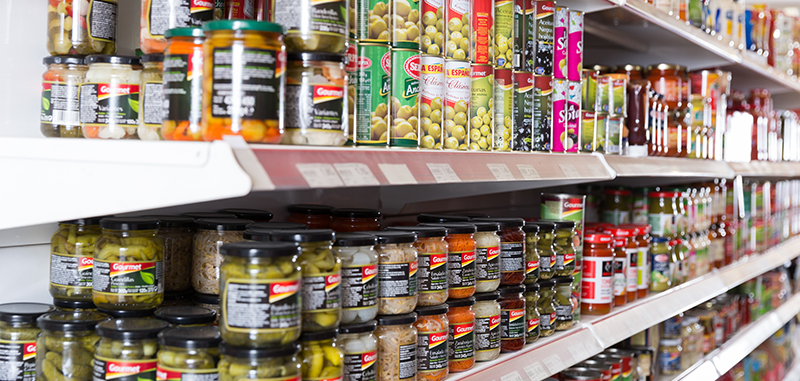
If you don’t spend every hour of the workday thinking about product labels (like we do), you may not realize they’re more than just sticky pieces of paper or plastic. A surprising number of factors must align to create the perfect product label. And most importantly, the factors differ depending on your product and your goals for the label.
Knowledgeable and experienced vendors (again, like us) will guide you through each decision. But to help you start thinking about the conversations you’ll have with your label printer, we’ve compiled a list of some of the most common product label printing mistakes to avoid:
1. Improper Combination of Adhesive and Label Stock
Two key components that go into the construction of a product label are the stock – the material the label is made of – and the adhesive – the glue that makes it stick to the surface of your product. These two elements must work together to establish the desired type of bond.
Some adhesives work well with synthetic material such as polypropylene or polyethylene, while others work better with paper or cardboard. A strong adhesive with a paper label stock might work well for a tamper-evident label – it can’t be removed and reapplied without being destroyed. That same combination, however, will frustrate customers if in the form of a pricing label. (We’ve all had the joy of trying to pick little bits of torn paper label off of new glassware.)
There is no single “standard” combination of adhesives and label stock. It depends entirely on how you plan to use your label. Make sure your label supplier has access to a wide range of adhesives and materials and is willing to talk you through your options to find the right ones for your needs.
2. Overlooking the Shape of the Product
The shape of a surface can also affect the strength of an adhesive bond. Round bottles and jars, for example, can present challenges that flat-sided containers do not.
Curves can also distort the imagery on your product label, which is why it’s important to think in three dimensions when designing your label. You want your entire brand name and logo to be visible on the shelf.
3. Lack of Consideration for Environmental Factors
It’s a harsh world out there. Throughout its lifetime, a product label may be exposed to moisture, sunlight, extreme heat and cold, and rapid temperature changes. All these conditions threaten to loosen adhesive bonds, rip materials, and discolor ink.
Think about a beer bottle. It can go from room temperature on the shelves of a craft brew dealer, to the chilly interior of a customer’s fridge, to submersion in ice and water inside a cooler, to the blazing sun and heat of a summer cookout. Through it all, the label has to keep doing its job: representing your brand.
Outdoor equipment labels are especially susceptible to the ravages of the environment. Changes in temperature can cause a surface to expand and contract, stretching a product label along with it. Vinyl is an excellent choice for outdoor applications because it can expand in every direction and then return to its original shape without cracking or peeling. (We call that “multidimensionally stable.”)
Your printer will help you choose the right stock, ink, and adhesive for your product’s typical environment.
4. Too Many Branding Changes
It can be tempting to take on a new look with a new label. But shake up your image too much, and it might confuse your loyal customers.
Your brand has a certain identity it has earned over years, and perhaps decades. Don’t throw it all away just for the sake of change.
On the other hand, incremental change may be welcome. Customers love seeing new spins on familiar favorites. (For inspiration, read our rundown of the latest label design trends.)
5. Ignoring Application Method
How do you plan to apply your custom labels? By hand or by machine? Will you apply them all at one site or multiple locations?
These are questions worth thinking about before ordering product labels because they determine the label format: rolls, cut singles, or sheets.
Rolls can be fed into machines, but they may be unwieldy for manual application. Cut singles can prove more expensive due to additional tooling or presses, but they’re ideal for distributing to multiple locations and people. Sheets are a good choice if you plan on printing a variety of label shapes and sizes on a single backing piece.
If your label printer knows their stuff, they will be happy to help you choose the right label format, as well as answer any other question raised by this article.
At The Label Printers, we’re always eager to do our part to demystify custom labels and the printing process. Get in touch with us today.

